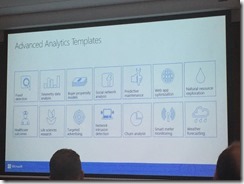AWS Partner Training
1/5/2017 – Cliftons Canberra
“AWS would like to invite you to attend the ALL NEW AWS Solutions Training for Partners: Foundations in Canberra on Monday 1st May from 9:00pm – 3:00pm. You will have a chance to meet the AWS sales teams for Canberra and learn how to address customer business priorities & solve customer challenges around cost, agility, security, compliance, innovation & growth. Space will be limited and I encourage you to register today.
If you’ve attended the STP Foundations workshop previously, we’re taking a VERY different approach this year and I’m confident that you’ll get a lot of value from attending – based on your feedback, we’ve changed the training dramatically. The workshop is a lot more interactive with role plays through the day – giving you a chance to put into practice what you learn, working alongside the Canberra AWS sales team.
This session includes content & role play sessions to help you:
- Identify AWS use cases and opportunities, learning about successful local case studies
- Understand the AWS sales engagement process including objection handling
- Learn more about AWS pricing, TCO, security & other key topics
- Engage with local AWS teams”
Introduction
The day started with an overview of the current state of Amazon Web Services, and a reminder that the 2017 AWS Summit is being held in Canberra 29/30 August 2017.
We launched into Who uses AWS?
– Splunk
– Geoscience Australia
– ATO (established procurement best practice)
– ADF (Department of Defence)
..(Plus many, many more)
There was an introduction to the phases of cloud adoption:
1. Project (PoC)
2. Hybrid (https://aws.amazon.com/enterprise/hybrid/)
3. Sealing (refinement?)
4. Cloud first
https://d0.awsstatic.com/whitepapers/aws_cloud_adoption_framework.pdf
Security Concerns
– Amazon listed on the CCSL List (IRAP Certification)
– Secure Cloud Strategy (DTA)
Distribution/Design
– 19 Regions (min 2 AZ per Region)
o 42 Availability Zones (>=100kms from another AZ)
– 70 Edge locations (provides DNS, CDN)
AWS Artefact – compliance reports – are available in each region.
Driven by the use of APIs
Each instance/host is hardened by default. Customers are responsible for relaxing security, encrypting content (over the top) on a shared responsibility model. Instances (except S3 storage) do not replicate by default.
Financial
Cost Model
1. Pay as you go (ad hoc)
2. Pay less per unit (pay less per unit by using more)
3. Pay less when reserving (helps AWS with capacity planning)
4. Economies of scale (AWS becomes cheaper with growth)
Compute
1. On demand (ad hoc)
2. Reserved
3. Spot (bid on unused resources)
4. Dedicated (host or instance)
Online tool helps determine cost calculations:
https://calculator.s3.amazonaws.com/index.html
Calculates based on raw input or based on predefined templates
Cost optimisation:
1. Right sizing
2. Reserved instances (estimate your usage)
3. Increase elasticity (grow/shrink usage)
4. Measure, monitor and improve (continuous improvements in the use of AWS resources)
Cost Comparisons (AWS vs On-premises)
Consider the full TCO, e.g.
1. Server
2. Storage
3. Network
4. IT Labour
5. Extras
Investment in AWS pays dividends over time (cost to use AWS reduces)



